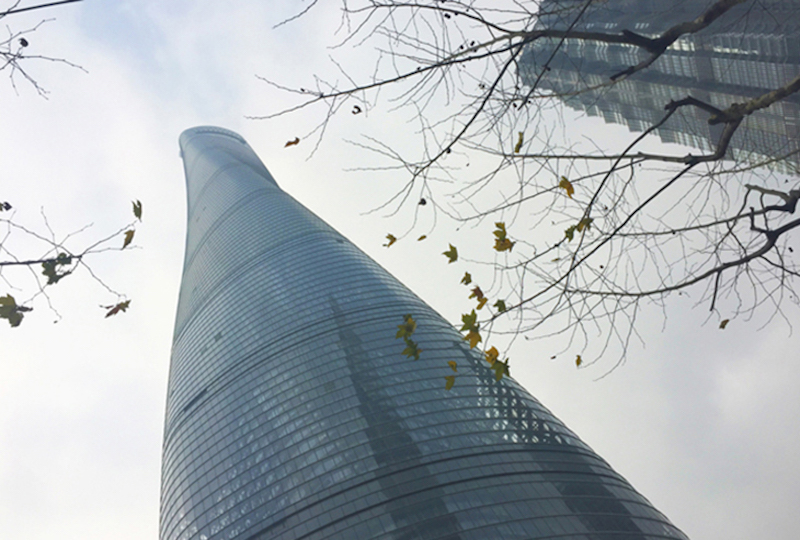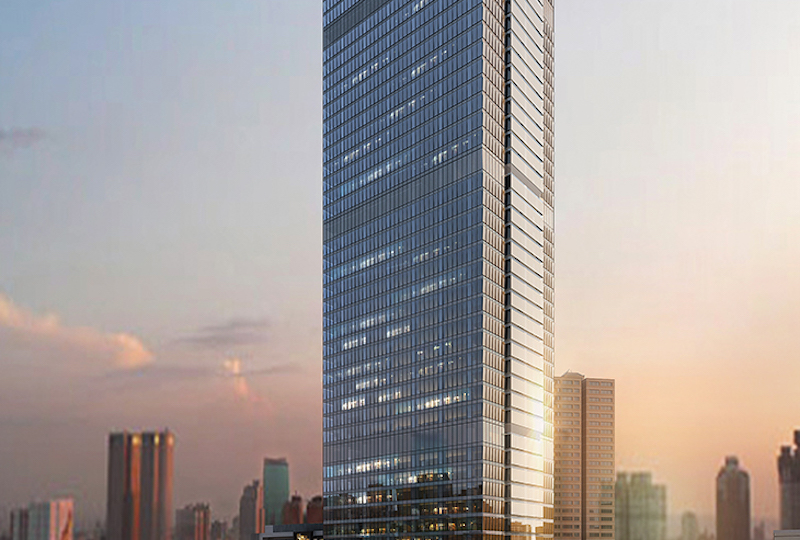Extraordinary technological advances have taken tall buildings to new heights, quite literally. Whereas in 1973 Chicago’s Willis Tower was the tallest of them all at 442 meters (1,451 feet), Jeddah Tower in Saudi Arabia will assume that distinction in 2020 or thereabouts, leapfrogging all other super- and megatall buildings with a height of 1,000 meters. Advances in structural systems, high-strength concrete and steel, vertical transportation, and glass and steel façades largely made it possible.
In spite of this ability to build tall and taller buildings—usually fully glazed, often in extreme climates with increasingly smart technologies—it could be argued that we are not similarly “rising to the occasion” in terms of optimization. We’re not optimizing the user experience, occupant comfort, and energy reductions that taller structures inherently offer because we don’t have the best data to do that. Perhaps it’s time to add another technological advance—drones—into the design process for the purpose of creating not just the tallest but the most responsible tall buildings.
A matter of size and scale
It’s important to understand that optimization is always critical, but perhaps more so when talking about very tall buildings simply because of their scale and all the ripple effects. For instance, reducing a megatall’s weight by even two percent through optimizing its structure can result in a significant reduction in steel and concrete. And this, in turn, has an impact on foundation loads and (potentially) wind forces.
Although from a structural perspective, we do know a lot about the effects of wind on a tall building and on adjacent buildings and public spaces (via wind tunnel testing), we continue to question what impact air temperature and air quality have on tall buildings. The answer is probably quite a lot and, yet, we can’t guarantee those effects, let alone quantify them. And as for those wind forces we understand so well, we’re probably falling short on our full understanding of them, simply because we rely on meteorological data collected at the closest airport and not actual wind speed data specific to the site. Wind conditions at an airport, generally a low-rise area, are likely to be different from the urbanized environment of a tall building project.
The beauty of site-specific data
What passive virtues or challenges might exist if these numbers were more clearly recorded on-site and understood within the context of, perhaps, using that high-velocity air to optimize building systems? Same with temperature gradients. Explorers and mountaineers are familiar with changes in atmospheric conditions when they ascend to greater altitudes. Shouldn’t we understand the range of temperatures that a megatall building is exposed to as it ascends and how air quality improves? Consider how we might optimize heating and cooling systems throughout the height of a building if the changing external conditions were more explicitly known.
 Shanghai Tower. Image © Gensler.
Shanghai Tower. Image © Gensler.
So what does this mean for the design of tall buildings? Let’s use as an example a 600-meter (about 2,000-foot) mixed-use tower in Philadelphia where summers are fairly hot and humid, and the winters are chilly. In summer, when the temperature at grade could be 93 degrees, it’s likely to be 10 degrees cooler 600 meters up. In winter, temperature at the grade level could be 14 F, but at 600 meters up, it’s around -6 F, or 20 degrees cooler.
Let’s say the occupants of this imaginary 600-meter tower (with 150 floors and total square footage comparable to that of Willis Tower) expect an internal air temperature of 72 degrees, year round. We know that buildings are in cooling mode during the summer and heating mode during winter. What if we used our understanding of varying external temperatures to optimize the HVAC system and occupant comfort? In the summer, the 83-degree air at the top of the building would be drawn in and cooled by 11 degrees to achieve the desired 72 degrees. That would represent a significant savings over intake at ground level where the outside air is 93 degrees. In the winter, the reverse approach seems sensible. Outside air would be supplied from the lower levels of the building at 14 F rather than from the top where the temperature is below 0 F. Given the scale of the building, this optimization and calibration of internal HVAC equipment could significantly reduce energy use and carbon emissions.
Imagine the glass and steel façade of that same megatall as having an external surface area measuring as much as 12.6 hectares (roughly 31 acres). Two-thirds of this area will be exposed to direct solar glare, and 100 percent will be susceptible to moisture ingress and energy loss through the building envelope. Air leakage and infiltration rates are based on a standard factor (0.06 CFM/ft2) irrespective of building height, even though it is now understood that air leakage will increase at higher altitudes. We have already noted that air temperature reduces at altitude, while wind speed and pressure increase. All of these varying conditions would affect the performance of a 150-story building, but we have limited data to quantify that.
In addition, tall buildings have another phenomenon to consider called the “stack effect “ in which hot or cold air rises or descends through the volume of the building via elevator shafts, creating varying conditions on each floor and fluctuating throughout the calendar year.
Drone-assisted architecture
Currently, the world has 108 completed supertall and three megatall buildings. Potentially all of them have an undersized heating system and an oversized cooling system, the consequence of using generic weather data that didn’t account for varying wind speeds, air temperatures, and air quality at different heights. With today’s drone technology, these conditions could be recorded at various height datums to help architects and engineers better predict actual climate variables. That would enable us to do something truly effective: optimize building systems and facades to design and deliver the most efficient, responsible and comfortable skyscrapers we possibly can.
More from Author
Gensler | Oct 21, 2024
3 surprises impacting the return to the office
This blog series exploring Gensler's Workplace Survey shows the top three surprises uncovered in the return to the office.
Gensler | Jun 26, 2024
5 ways ESG can influence design and create opportunities
Gensler sustainability leaders Stacey Olson, Anthony Brower, and Audrey Handelman share five ways they're rethinking designing for ESG, using a science-based approach that can impact the ESG value chain.
Gensler | May 20, 2024
10 spaces that are no longer optional to create a great workplace
Amenities are no longer optional. The new role of the office is not only a place to get work done, but to provide a mix of work experiences for employees.
Gensler | Apr 15, 2024
3 ways the most innovative companies work differently
Gensler’s pre-pandemic workplace research reinforced that great workplace design drives creativity and innovation. Using six performance indicators, we're able to view workers’ perceptions of the quality of innovation, creativity, and leadership in an employee’s organization.
Gensler | Mar 13, 2024
Trends to watch shaping the future of ESG
Gensler’s Climate Action & Sustainability Services Leaders Anthony Brower, Juliette Morgan, and Kirsten Ritchie discuss trends shaping the future of environmental, social, and governance (ESG).
Gensler | Feb 15, 2024
5 things developers should know about mass timber
Gensler's Erik Barth, architect and regional design resilience leader, shares considerations for developers when looking at mass timber solutions.
Gensler | Jan 15, 2024
How to keep airports functional during construction
Gensler's aviation experts share new ideas about how to make the airport construction process better moving forward.
Gensler | Dec 18, 2023
The impacts of affordability, remote work, and personal safety on urban life
Data from Gensler's City Pulse Survey shows that although people are satisfied with their city's experience, it may not be enough.
Gensler | Nov 16, 2023
How inclusive design supports resilience and climate preparedness
Gail Napell, AIA, LEED AP BD+C, shares five tips and examples of inclusive design across a variety of building sectors.
Gensler | Oct 16, 2023
The impact of office-to-residential conversion on downtown areas
Gensler's Duanne Render looks at the incentives that could bring more office-to-residential conversions to life.
















